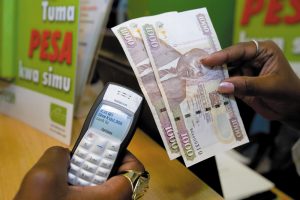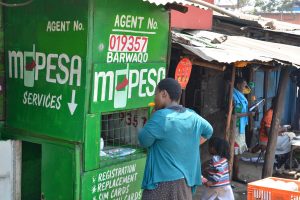
The way global currency is exchanged certainly has evolved in recent decades. We now have the power to make payments via a variety of cutting edge digital avenues. Some parts of the globe have made more strides than others, but payment technology has been widely adopted in Sub-Saharan Africa in the past few years. Below we explore the two key players in digital financial management and how they stack against each other in sub-Saharan Africa.
What is a Privately-Owned Mobile Money Service?
A privately-owned mobile money service refers to an entity unaffiliated with any large-scale financial institutions that offer mobile payment services, such as PayPal or Venmo. It allows one to make and take payment, from or to an entity, at any time.
In sub-Saharan Africa, the biggest player in mobile money is M-Pesa. M-Pesa is a revolutionary money transfer service initiated by a mobile app. M-Pesa was launched in 2007 by Vodafone for Safaricom and Vodacom, it’s defined as a “financing and microfinancing service.” Today, it’s forecasted that this particular region will have 500-million cell phone subscribers to the service by 2020.
What is Mobile Banking Service?
Mobile banking service is similar to mobile money in that you can manage your money remotely through a mobile app. However, mobile banking service is offered by financial institutions and it doesn’t quite offer the same functionality as a mobile money service. With mobile banking, you can mostly deposit and withdraw your finances, make transfers, and check your payment history.

How Do the Two Compare in Sub-Saharan Africa?
The adoption of mobile money in sub-Saharan Africa has skyrocketed in recent years, particularly in the East African countries. It now holds an astounding share of the world’s mobile payment transactions. Ultimately, it was mobile money that paved the way for bank-owned mobile financial services in this region.
Growth Rates
In its financial inclusion survey, The World Bank’s Global Findex Database found that 21% of adults in this region have a mobile money account, which is near twice the share it was in 2014 and the highest in the world.
It was this growth that proved how lucrative mobile money management was in SSA. It’s also why, just recently, sub-Saharan Africa became the ideal breeding ground for bank-owned mobile financial services. Now, both financial management options are growing substantially in unison.
Demographics
While bank-owned mobile finance services have allowed people to better manage their financial risks and household finances, it seems only to be better suited for middle or higher income households. This is largely due to the fact that in order to participate in mobile banking, you need to have a bank account.
Mobile money market practitioners recognized the need for lower-income households to have access to mobile money management without the need for a bank account. They focused their efforts on providing financial transfer services with the need for bank affiliation.
Social Impact
Mobile money has created a positive ripple effect for other industries, such as water and sanitation, education, energy, and agriculture. One example is the Dar es Salaam Water and Sewage Corporation, which was able to increase their revenue by 38% in 2013 by offering mobile money as a method of payment.
On the other hand, bank-owned mobile money services rely more heavily on the social responsibility of the financial institution. That being the case, it does seem like SSA’s key financial institutions actively incorporate social responsibility into their mission. For example, Standard Bank, Africa’s highest ranking bank, is a Global Funder of the HER Campaign, which aims to curb HIV infections among teen girls and young women. Although a worthy cause for support, there is room for banks to focus their efforts toward more relevant projects like improving financial inclusion overall in their country or region.
Challenges
Despite the growth of both innovations in mobile financial management, there are still some unique challenges within each. For mobile money, the competition of the market is increasing as more companies take note of the potential. With bank-owned mobile financial services, high fees are one of the biggest drawbacks.
For both, rural areas of sub-Saharan Africa are still emerging; network access being the biggest key player here. GeoPoll predicts that both entities will experience future growth in this region as the benefits of each become more widely recognized, and as more organizations partner to spread resources to rural areas.
In terms of predicting that growth and the growth in a wide array of other markets, GeoPoll offers one-off surveys, ongoing data collection, and pre-built data products for brands, media houses, international development organizations, and humanitarian aid groups. Our research solutions provide critical insight that helps you make high-profile decisions in regards to your specific segment. Contact us today to get started!



